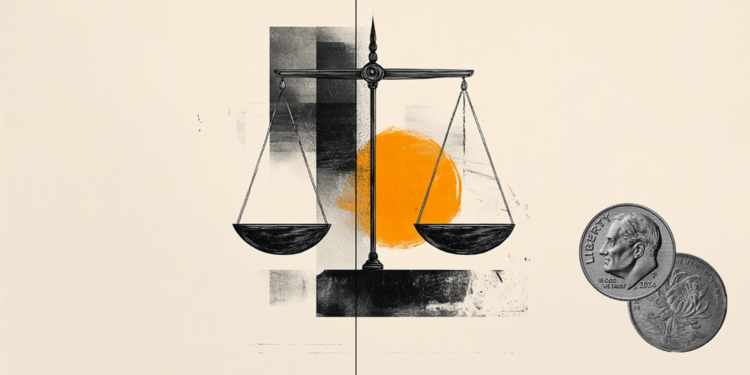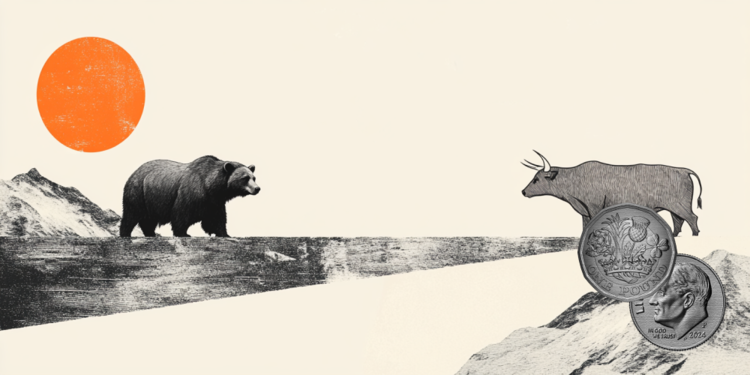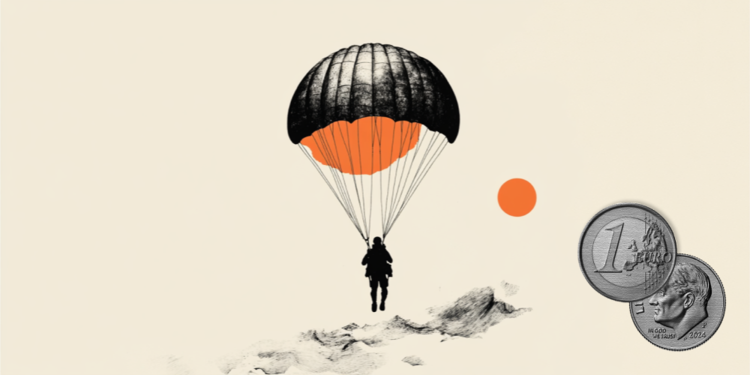When Russia invaded Ukraine in February of this year, many believed the war would only last a few days. After all, the superiority of the Russian armed forces in terms of equipment, numbers of soldiers and firepower over Ukrainian troops seemed overwhelming.
But six months later, the conflict continues and there are increasing signs of stagnation, especially in the Donbass region.
It is not that Russia has not been successful: it has captured large portions of Ukrainian territory in the east, from where it is still trying to advance (slowly) and even further in the south, where it appears to be entrenched to consolidate its control over much of the coast of Ukraine. Ukraine.
However, the advance on the capital Kiev, which took place in the early days of the invasion, ended in failure and retreat; constant bombings across the country did not lead the Ukrainian government to surrender; and Ukrainian troops, which receive material support from North Atlantic Treaty Organization (NATO) countries, are operational and have even mounted local counterattacks, while reports of a possible major counteroffensive are growing.
Why, then, has it been so difficult for Russia, one of the world’s leading military powers, to beat Ukraine?
The will to fight and the Ukrainian resistance
Soldiers who defend the territory in which they live with their families tend to have more incentive and more will to fight than those who, on the contrary, carry out offensive activities in another country, despite their military superiority.
This was clearly seen during the Vietnam War and also in the two wars in Afghanistan, where they fought – and lost – the Soviet Union in 1980 and the United States in 2001, to name just a few examples (there are counterexamples, of course, in every war). ended with a successful conquest).
In the case of the current war, Ukrainian troops have shown a willingness to fight from day one, complying with general mobilization orders and repeatedly reporting to fight Russian troops, even when they suffer heavy losses. And all against a backdrop of numerous reports of Russian atrocities in Bucha and recently in Kiev, which the Kremlin denies.
“Ukrainian morale and will to fight are unquestionable, and I think they are greater than the average will to fight on the Russian side, so the Ukrainians have a significant advantage,” said Colin Kahl, undersecretary for policy at the US Department of Defense. USA.
On the contrary, reports of low morale among Russian soldiers, many of whom were mobilized in February without knowing that they were going to participate in a war, have not ceased since the beginning of the war, especially among the conscripts and the troops of the People’s Republic of Donetsk and Luhansk, formed in eastern Ukraine in 2014 under the support of Moscow and now fighting alongside the Russians.
In March, UK intelligence chief Jeremy Fleming said morale was so low in some Russian units that there were instances where they refused to carry out orders.
A US Defense Department source also said in March that there were cases of low morale in some Russian units in the face of unexpected Ukrainian resistance. Pentagon spokesman John Kirby cited “problems with morale and lack of cohesion in specific units”.
Kremlin spokesman Dmitry Peskov denied, in an interview with Christiane Amanpour, from the CNN , that Russian troops had morale problems. “We must doubt this information,” he declared.
In August, however, Pavel Filatyev, a Russian paratrooper who took part in the first months of the war, harshly criticized the conflict and the Russian government in a written statement he posted on social media before leaving the country, alleging that Russian troops they are “tired, hungry and disillusioned”.
“We understand that they dragged us into a serious conflict where we are simply destroying cities and not releasing anyone. We are just destroying peaceful lives,” Filatyev wrote. “This fact greatly influenced our morale. That feeling that we’re not doing any good.”
Given the medium to long-term economic impact of US and allied sanctions on Russia, living conditions for Russians are expected to deteriorate in the coming months, which could have an even greater impact on morale. troops.
Of course, Ukraine is not immune to the situation: the country’s economy has collapsed, grain exports have plummeted and millions have lost their jobs or been forced to emigrate or move within national borders since February. In addition, a winter is approaching that will be especially difficult due to the impacts of the conflict on prices and energy supply.
Russia did not use all its strength
Russian President Vladimir Putin described the invasion of Ukraine that began on February 24 as a “special military operation”. The Russian government uses the same term for what the West sees as a “war of aggression”.
Even if it seems just a semantic issue, especially for those who are bombed from both sides, this classification recognizes that Russia, at least for now, has not used all its resources and firepower against Ukraine.
The Kremlin has not mobilized all its men, as the Ukrainian government has done, and continues to rely on recruits, while also failing to bring the economy into a war situation.
Even so, Russian military might, second only to the US in the world, is evident in Ukraine. At the beginning of the war, there were 900,000 active soldiers (although only a portion was used) against Ukraine’s 190,000; nearly 16,000 tanks against 3,300; about 1,400 planes against 400; and an expense of US$ 45.8 million against US$ 4.7 million.
There is another big difference between Russia’s and Ukraine’s military capabilities: nuclear weapons.
Russia has one of the two largest atomic arsenals in the world, along with the United States. There are 6,225 nuclear warheads, of which 1,625 are deployed, that is, ready to use. Russia also has the so-called “nuclear triad” of means of launching the warheads: ballistic missiles, submarines and aircraft.
In the arsenal, there are strategic weapons of enormous power, designed to destroy entire cities thousands of kilometers away, but there are also tactical weapons of reduced power, designed to be fired in conventional military conflicts, such as the current one.
Ukraine does not have any kind of nuclear weapon. When it was part of the Soviet Union, the country housed an important arsenal, which it ended up handing over to Russia after independence.
At the moment, Russia is unwilling to use nuclear weapons in Ukraine and is unlikely to happen. No such attack has taken place since 1945, as its use would have consequences impossible to anticipate. Even if Russia applied less powerful tactical weapons, the damage done to Ukrainian territory would be incalculable.
Severe harm to the Russians would be unacceptable to a Putin who said that Ukraine and Russia are “one people”, that the Ukrainian government was corrupted by the West by a “forced change of identity”, and that the “special military operation” was intended , in part, to “liberate” Ukrainian territories.
The importance of NATO support
Faced with military inequality, the Ukrainian war effort has used material sent by NATO countries, especially by the United States and also by Europeans.
In the first few weeks, much was said about Javelin (US) and NLAW (Sweden and UK) anti-tank missiles, Panzerfarst 3 rockets (Germany) or Stinger anti-aircraft missiles (US), which were used by Ukrainian infantry against Russian armored columns and their support aircraft.
Afterwards, the West also supplied Ukraine with advanced self-propelled artillery systems, such as the French Caesar howitzer armored launchers and the German Panzerhaubitze 2000 and the American HIMARS missile launchers and M777 howitzers, which served in artillery duels in the east.
The United States also sent AGM-88 anti-radar missiles to be launched by Ukrainian fighters. The weapons were designed to track the radiation emitted by the radars and destroy them, allowing the partial defeat of Russian air defenses.
As for drones, Ukraine received both Turkish Bayraktar and American Switchblade.
All these Western weapons systems constitute a technological leap for the Ukrainian military and a huge problem for Russia, whose defense industry suffered major problems in the 1990s after the fall of the Soviet Union. Even today, it is based on a large amount of equipment designed or even built in the Soviet era.
The Ukrainian government expects even more: it has been negotiating to receive Soviet-era fighter jets from NATO countries – similar to those already operated by its Air Force – as well as the purchase of tanks and other armored vehicles. But NATO has been careful at this point in selecting what it sends to Ukraine, giving priority to defensive weapons, to avoid an escalation of the conflict if Ukraine takes the war to Russian territory with offensive weapons of Western origin.
In any case, Ukraine appears to be moving in that direction: the Russian guided missile cruiser Moskva was sunk in April, and many explosions were reported in military warehouses on Russian territory, close to the border, such as Belgorod — a Russian air base in Crimea. .
But as in the trenches of World War I more than 100 years ago, the conflict seems to be rewarding defensive actions and making offensives difficult – which both Russia and Ukraine have proven – and stagnation and attrition appear to be turning the tide. standard.
Source: CNN Brasil
I’m James Harper, a highly experienced and accomplished news writer for World Stock Market. I have been writing in the Politics section of the website for over five years, providing readers with up-to-date and insightful information about current events in politics. My work is widely read and respected by many industry professionals as well as laymen.







